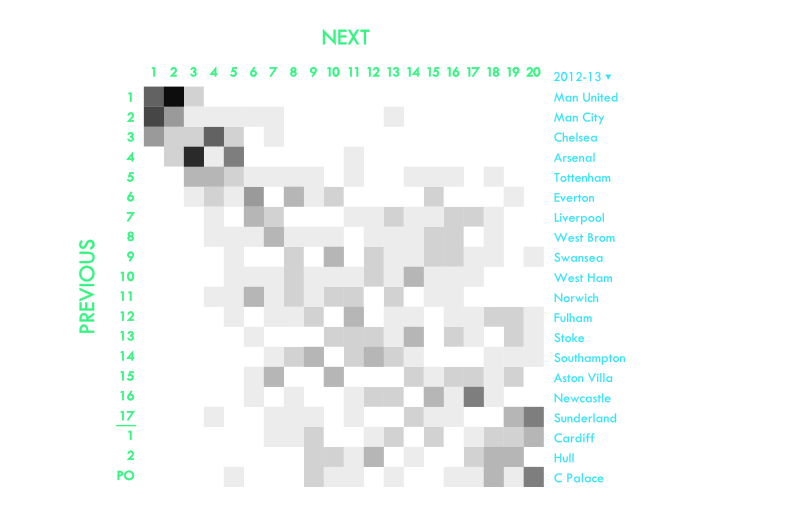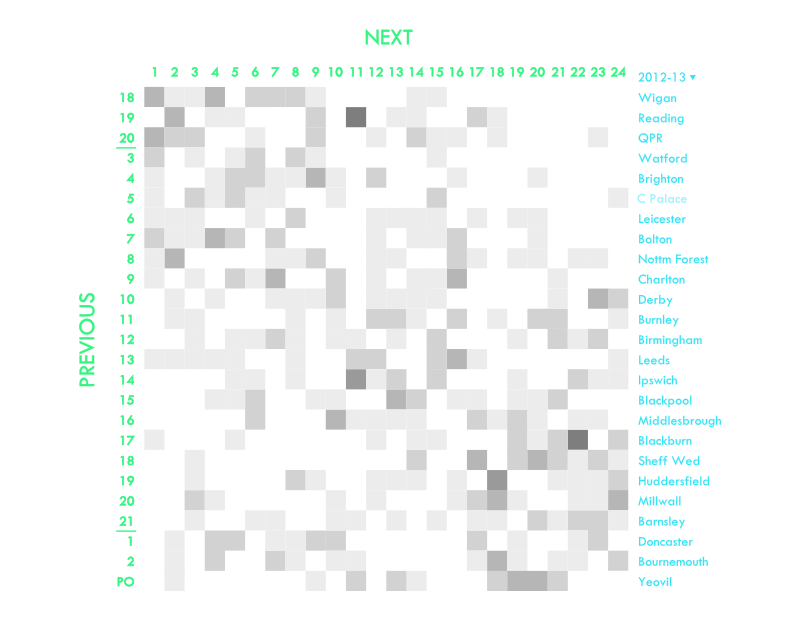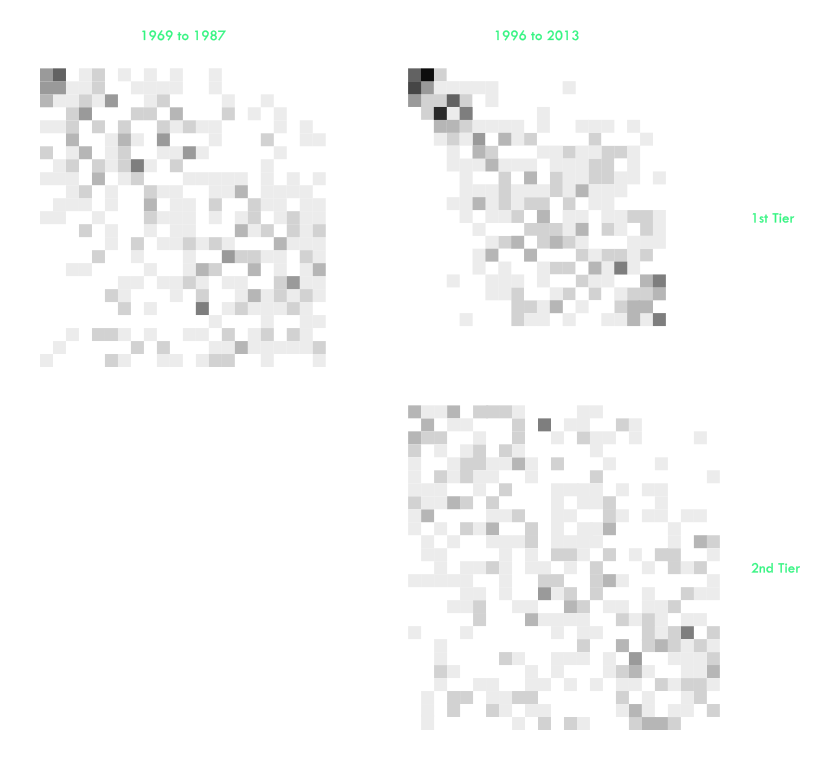Will next time be any different?

When making predictions in August about where a team will sit in the table come the season’s end, the first step will almost always be to look at where they finished the previous season. The second step involves adding or subtracting a small number (which can be zero) to take into account players bought or sold, the cut of the jib of the new manager (if applicable), whether this feels like ‘their year’ and maybe some totally random element if the predictions are in danger of being a replica of last year’s table.
To help guide what makes a realistic number for step two, I’ve charted the position teams finish in the Premier League one season against the position they finish in the next.
Vertical axis = ‘previous’ season’s positions, being 1st to 17th in the first tier and winner, runner-up and play-off winner in the second tier
Horizontal axis = ‘next’ season’s positions, being 1st to 20th
The darker the shading, the more times teams have followed up the ‘previous’ position with the ‘next’ position, white being zero and black being nine
e.g. Teams that have finished 2nd have followed that up by finishing 1st many times, 2nd a few times and 3rd, 4th, 5th, 6th, 7th and 13th once each.
The list of clubs shows who finished in that position in 2012-13 (NB: that is all the list of clubs shows, so, for example, the 2nd row covers all teams that have finished 2nd in the Premier League over 17 seasons, not just Man City).
The data only goes back as far as 1995-96 because firstly the modern top flight is a very different animal to the old one (as we’ll see later) and secondly that was the first season the top flight has had 20 teams, and a consistent number of teams keeps things simple.

The most notable thing is that cluster at the top left. As we already knew, in the Premier League you don’t finish 1st without having finished in the vicinity of 1st the year before and if you’re planning to finish in the vicinity of 1st you better have recent memories of finishing in the vicinity of the vicinity of 1st.
Here’s the English football’s second tier for the same period, again with 2012-13’s finishers.

This is a much more open market. However, before we carried away, it has to be pointed out that it’s impossible for an oligopoly of top teams to emerge because anyone finishing in the top two one season will never finish there the next. Nonetheless, as you would expect, the unpredictable Championship presents a much more scattered picture than the Premier League
Going back to the top flight here’s the picture for an equivalent period in the past: the First Division of 1969-70 to 1986-87. I chose that as a period of the same length as the one used above and with a constant number of teams: 22. Note that 20th in the First Division and 3rd in the Second Division were relegated and promoted only from 1973-74 onwards.

The top flight was much more open division in the seventies and eighties.
Here are the three graphs from above but with the clutter removed:

This isn’t the first time I’ve looked at the extent the Premier League has become more monotonous over time…
Repetitiveness in league champions
The fortunes of teams promoted to the top flight

[…] Statistische Spielerei: Liam Ferry (On Goals scored) schaut sich an, auf welcher Position die Premier-League-Teams in der Vergangenheit eingetrudelt […]
Excellent insight.